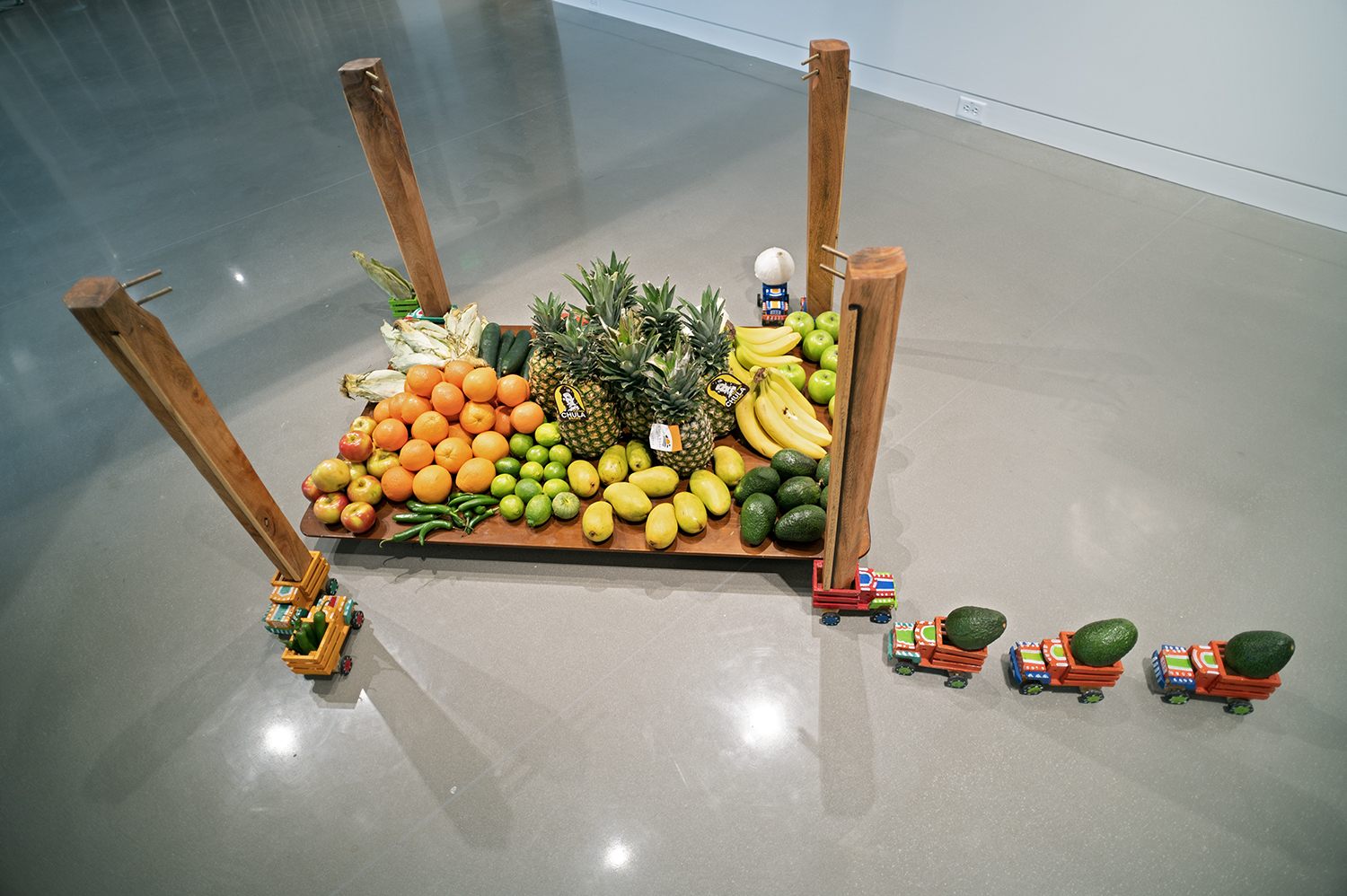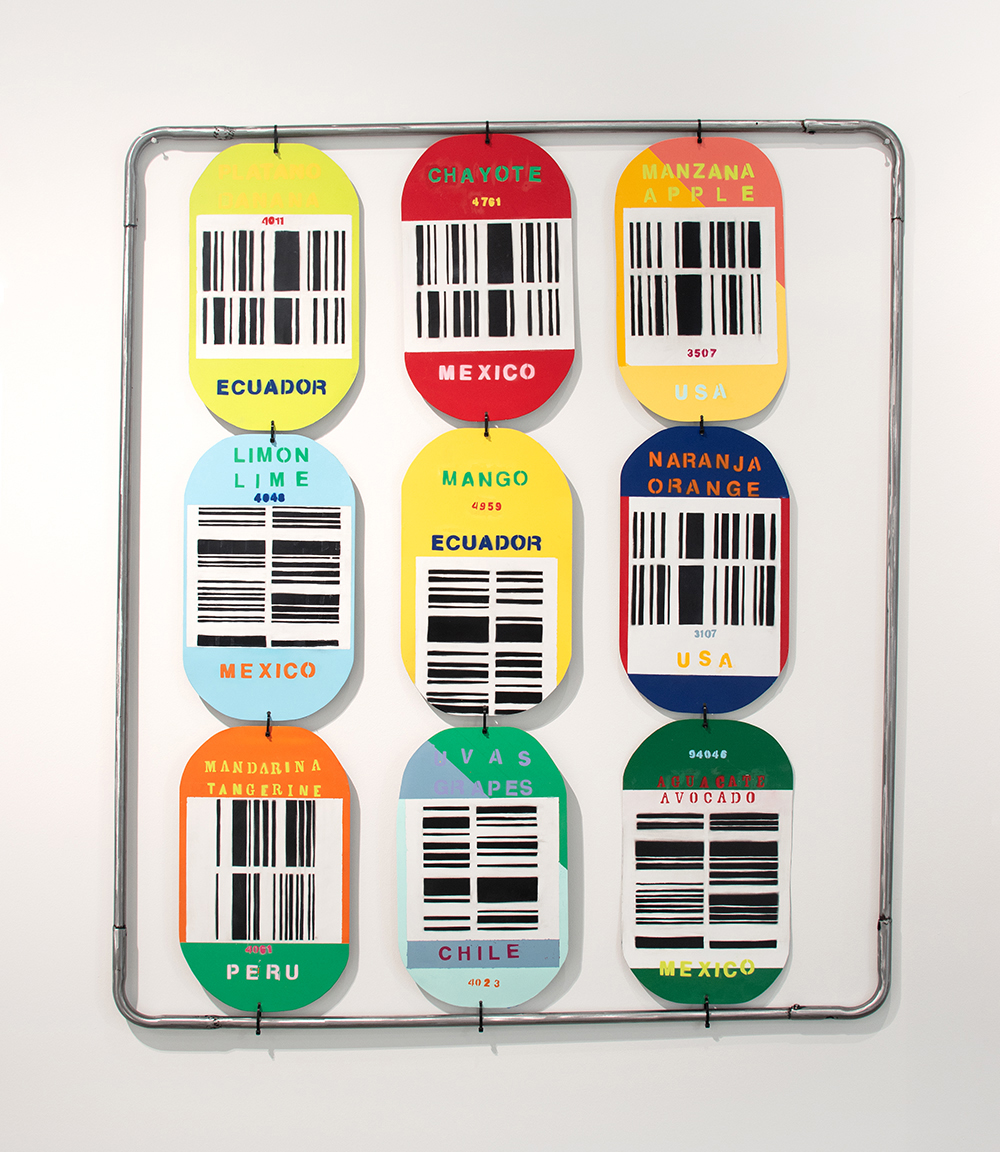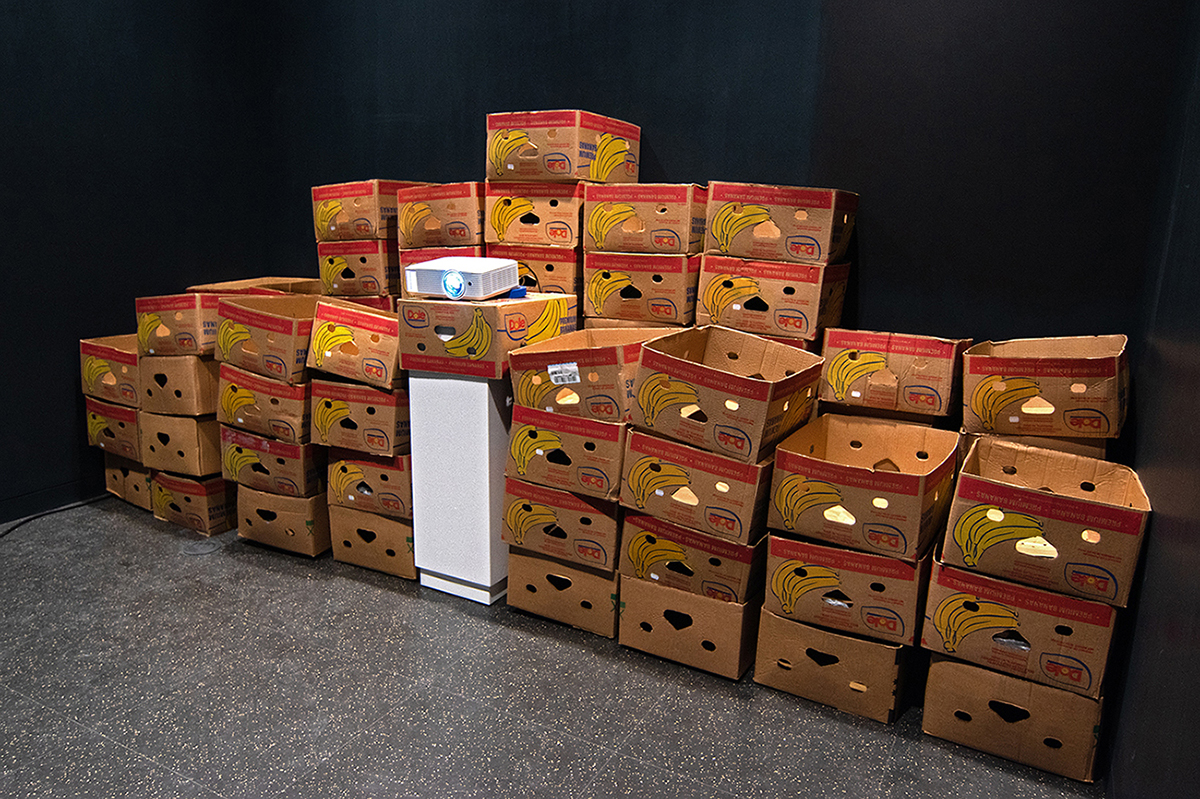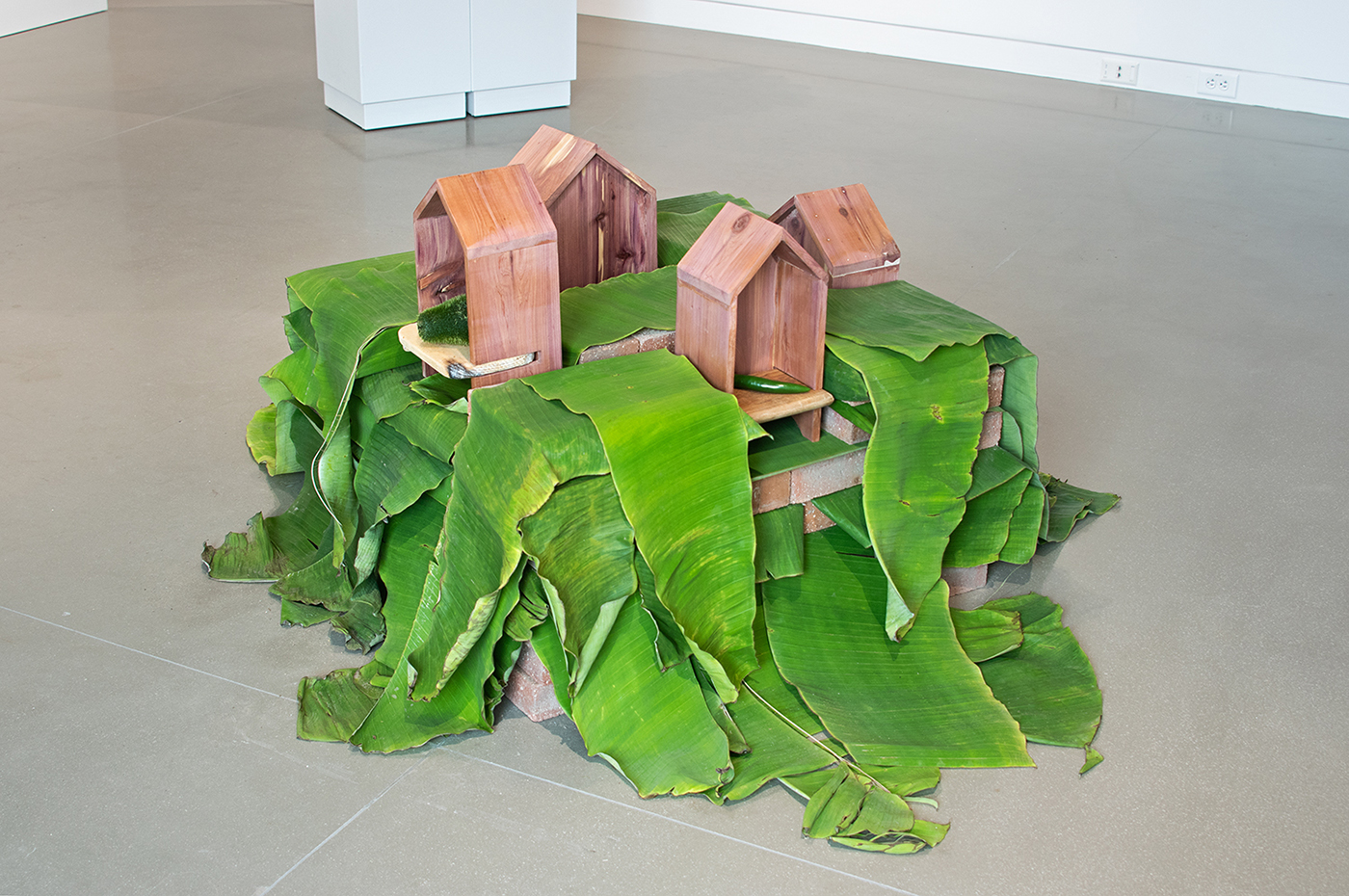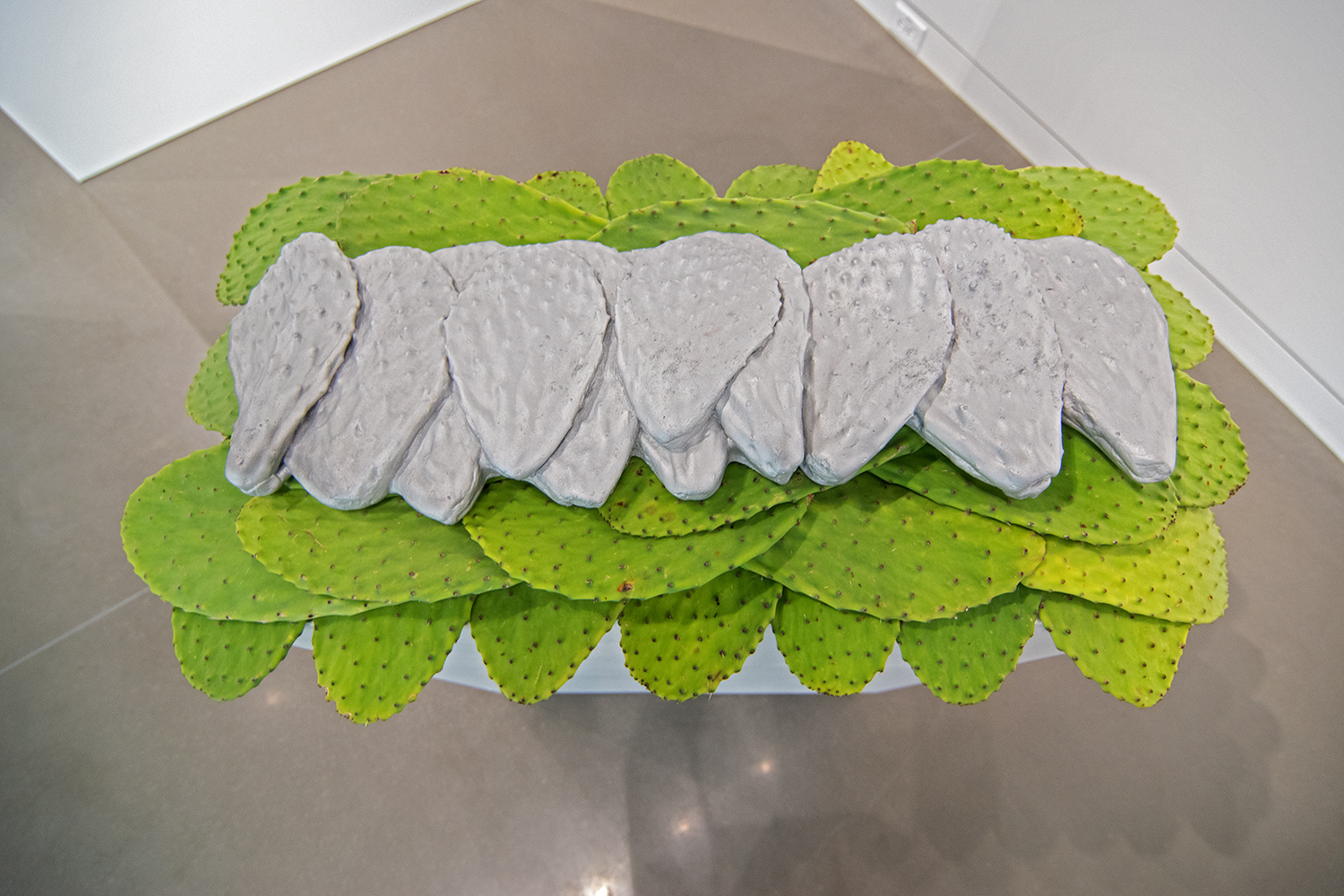| Sol, suelo, semillas, agua, viento, luz, noche, hojas, flores, abejas, insectos, polinización, frutas, verduras, tierra, agricultura, manos, trabajar, sembrar, plantar, personas que trabajan la tierra, historia, plantaciones, esclavización, raíces, desigualdad, injusticia, salarios bajos.
En este cuerpo de trabajo, me intereso en las verduras y frutas como producto, nutrición y figura religiosa.
Estoy retratando la producción masiva de verduras y frutas, su importación y exportación. Para cumplir su propósito como producto, los productos se han catalogado y categorizado con un código de barras que muestra cuánto cuestan. Podemos ver su valor, el país del que provienen y su nombre en las etiquetas adheridas en los supermercados.
En este intercambio de productos con moneda, quiero enfatizar quiénes han trabajado la tierra. Desde la colonización de las Américas, la explotación de la tierra por parte de los europeos, y ahora por parte de los gobiernos de las naciones y corporaciones privadas, las personas que trabajaron y continúan trabajando la tierra son predominantemente indígenas, afrodescendientes y mestizos. Una vez trabajaron la tierra sin libertad y ahora hay una nueva esclavización, salarios bajos sin seguro de salud y beneficios. ¿Es libertad trabajar sin tener un salario digno?
Los productos son vitales para nuestra existencia, nuestra nutrición y nuestra dieta. No importa dónde estemos, ya sea en el supermercado, en los mercados o incluso en las calles, vamos y los llevamos a casa semanalmente. Los productos son parte de nuestros hogares, nuestras recetas, nuestra historia, nuestra ascendencia, nuestros recuerdos y nuestra familia.
Los productos crecen en tierras fértiles con la humedad adecuada y la cantidad necesaria de luz solar. En las Américas, los productos provienen de plantaciones que van desde Canadá hasta Chile. Vivo en Utah; vivo en el desierto. Vivo en una tierra con condiciones climáticas extremas. Estas frutas y verduras vienen de donde soy, México.
Mi relación personal con frutas y verduras es uno a uno: veo cada una de estas entidades como completamente perfectas, incluso si están fuera de su norma, tamaños y formas irregulares. No podría imaginar figuras, texturas, colores y sabores más perfectos. Encontré espiritualidad y santidad en frutas y verduras.
En mi intento de evitar cualquier relación con lo exótico, un enfoque hacia lo excéntrico, una mirada de otredad y lo que no es "regular", "normal" o "fuera de rutina", decidí que los productos que merecen estar en un nicho son aquellos que ya tienen una connotación religiosa en las culturas y religiones precolombinas, como el maíz para la cultura maya, que se menciona en el Popol Vuh, el libro sagrado. Soy mexicana, me gustaría centrarme en México y los productos que son integrales para la identidad del país. Las hojas de cactus aparecen en la bandera de México, en la leyenda de la formación de Tenochtitlán —la capital del imperio azteca, que ahora es la Ciudad de México— y son parte de nuestra dieta diaria. Los productos que forman parte de la dieta mexicana incluyen aguacate, tomatillo, chile poblano, piña, lima, plátanos (hembra y macho) y chayote. Finalmente, hay productos que son en sí mismos un arma, como el chayote, las hojas de cactus, la piña, la fruta del dragón y el chile serrano. |
|
Sun, soil, seeds, water, wind, light, night, leaves, flowers, bees, insects, pollination, fruits,
vegetables, land, agriculture, hands, to work, to sow, to plant, people that work the land,
history, plantations, enslavement, roots, inequity, injustice, low wages.
In this body of work, I am interested in vegetables and fruits as a product, nourishment,
and religious figure.
I am portraying the mass production of vegetables and fruits, their importation and
exportation. To fulfill its purpose as a product, the produce has been cataloged and
categorized with a bar code that shows how much they cost. We can see their value, what
country they come from, and their name on the stickers attached at the supermarkets.
In this interchange of produce with currency, I want to emphasize who has worked the
land. Since the colonization of the Americas, the exploitation of the land by the
Europeans, and now by the governments of the state nations and private corporations,
the people that worked and continue to work the land are predominantly indigenous, afrodescendant,
and mestizos. Once they worked the land without freedom and now there is
a new enslavement, low wages without health insurance and benefits. Is it freedom
working without having a livable wage?
Produce is vital for our existence, our nourishment, and our diet. No matter where, if it is
the supermarket, the markets, or even the streets, we go and bring them home weekly.
Produce is part of our homes, our recipes, our history, our ancestry, our memories, and
our family.
Produce grows in fertile land with the right humidity and the necessary amount of sunlight.
In the Americas, the produce comes from plantations ranging from Canada to Chile. I live
in Utah; I live in the desert. I live in a land with extreme weather conditions. These fruits
and vegetables come from where I am from, Mexico.
My personal relationship with fruits and vegetables is one one-on-one: I see each of these
entities as completely perfect even though they are out of their own norm, irregular sizes
and forms. I could not imagine more perfect figures, textures, colors, and tastes. I found
spirituality and holiness in fruits and vegetables.
In my attempt to avoid any relation with the exotic, an approach to the eccentric, a gaze
of othering, and what is not “regular”, “normal”, or “out of routine.” I decided that the
produce that deserves to be in a niche are those that already have a religious connotation
in pre-Columbian cultures and religions, such as corn for the Maya culture, which is
mentioned in the Popol Vuh, the sacred book. I am Mexican, I would like to focus on
Mexico and the produce that is integral to the country’s identity. The cactus leaves appear
on the flag of Mexico, in the legend of the formation of Tenochtitlan —the capital of the
Aztec empire, which is now Mexico City— and are part of our daily diet. The produce that
is part of the Mexican diet includes avocado, tomatillo, poblano pepper, pineapple, lime,
bananas (female and male), and squash chayote. Finally, there is produce that is itself a
weapon, such as chayote squash, cactus leaves, pineapple, dragon fruit, and serrano
pepper. |
